Hayate Okuhara
Marsellus: A Heterogeneous RISC-V AI-IoT End-Node SoC with 2-to-8b DNN Acceleration and 30%-Boost Adaptive Body Biasing
May 15, 2023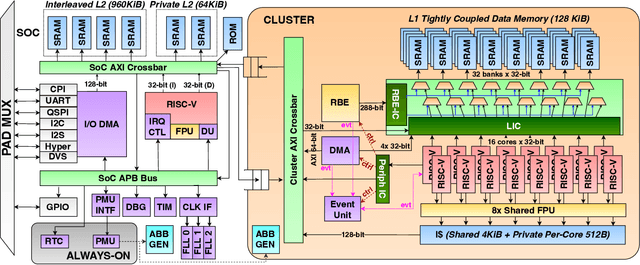
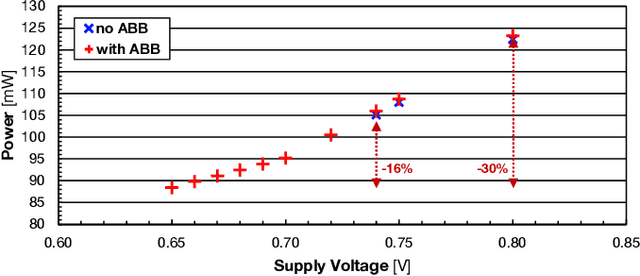
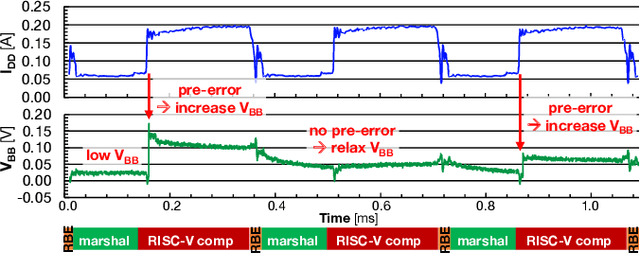
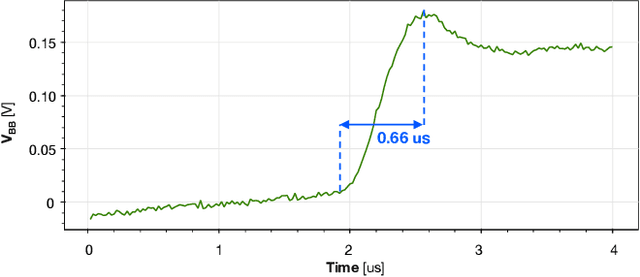
Abstract:Emerging Artificial Intelligence-enabled Internet-of-Things (AI-IoT) System-on-a-Chip (SoC) for augmented reality, personalized healthcare, and nano-robotics need to run many diverse tasks within a power envelope of a few tens of mW over a wide range of operating conditions: compute-intensive but strongly quantized Deep Neural Network (DNN) inference, as well as signal processing and control requiring high-precision floating-point. We present Marsellus, an all-digital heterogeneous SoC for AI-IoT end-nodes fabricated in GlobalFoundries 22nm FDX that combines 1) a general-purpose cluster of 16 RISC-V Digital Signal Processing (DSP) cores attuned for the execution of a diverse range of workloads exploiting 4-bit and 2-bit arithmetic extensions (XpulpNN), combined with fused MAC&LOAD operations and floating-point support; 2) a 2-8bit Reconfigurable Binary Engine (RBE) to accelerate 3x3 and 1x1 (pointwise) convolutions in DNNs; 3) a set of On-Chip Monitoring (OCM) blocks connected to an Adaptive Body Biasing (ABB) generator and a hardware control loop, enabling on-the-fly adaptation of transistor threshold voltages. Marsellus achieves up to 180 Gop/s or 3.32 Top/s/W on 2-bit precision arithmetic in software, and up to 637 Gop/s or 12.4 Top/s/W on hardware-accelerated DNN layers.
A Fully-Integrated 5mW, 0.8Gbps Energy-Efficient Chip-to-Chip Data Link for Ultra-Low-Power IoT End-Nodes in 65-nm CMOS
Sep 05, 2021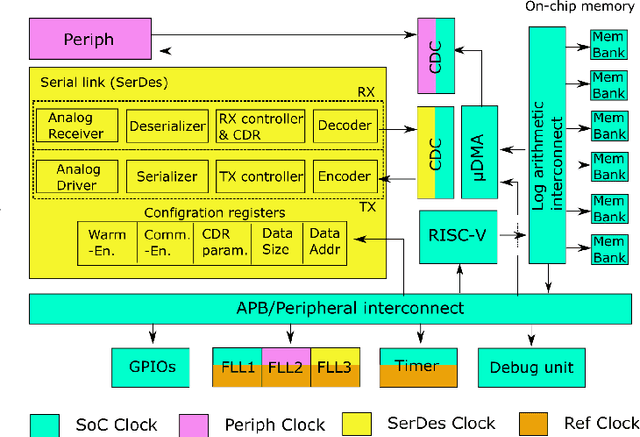
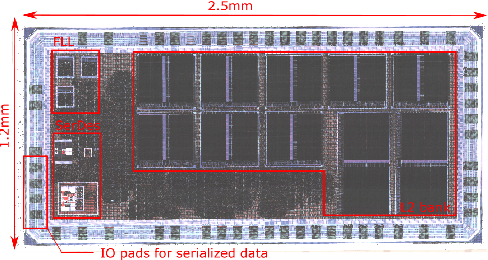
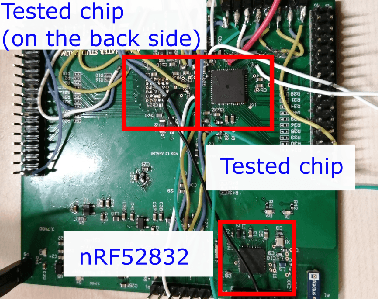
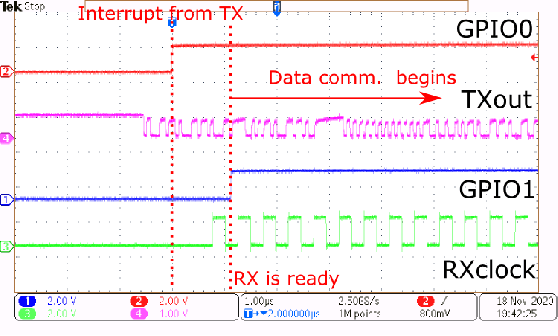
Abstract:The increasing complexity of Internet-of-Things (IoT) applications and near-sensor processing algorithms is pushing the computational power of low-power, battery-operated end-node systems. This trend also reveals growing demands for high-speed and energy-efficient inter-chip communications to manage the increasing amount of data coming from off-chip sensors and memories. While traditional micro-controller interfaces such as SPIs cannot cope with tight energy and large bandwidth requirements, low-voltage swing transceivers can tackle this challenge thanks to their capability to achieve several Gbps of the communication speed at milliwatt power levels. However, recent research on high-speed serial links focused on high-performance systems, with a power consumption significantly larger than the one of low-power IoT end-nodes, or on stand-alone designs not integrated at a system level. This paper presents a low-swing transceiver for the energy-efficient and low power chip-to-chip communication fully integrated within an IoT end-node System-on-Chip, fabricated in CMOS 65nm technology. The transceiver can be easily controlled via a software interface; thus, we can consider realistic scenarios for the data communication, which cannot be assessed in stand-alone prototypes. Chip measurements show that the transceiver achieves 8.46x higher energy efficiency at 15.9x higher performance than a traditional microcontroller interface such as a single-SPI.
 Add to Chrome
Add to Chrome Add to Firefox
Add to Firefox Add to Edge
Add to Edge